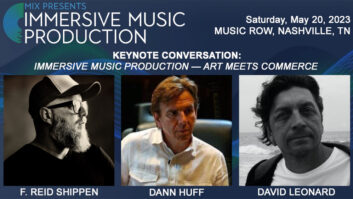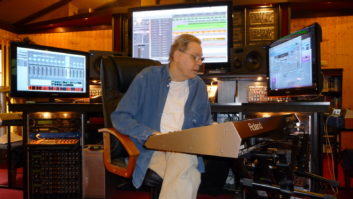At age 76, David Crosby’s work has spanned multiple generations—notably as a founding member of quintessential rock acts The Byrds, Crosby, Stills & Nash and Crosby, Stills, Nash & Young—whose music has permeated the very fabric of American culture. Recently, Crosby’s creativity has experienced something of a resurgence, manifested in a ‘trifecta’ of diverse solo albums which he’s issued over the last four years. The latest, Sky Trails, is the result of a fruitful writing partnership with his son, producer/multi-instrumentalist James Raymond, and many other writing collaborators. The two-time Rock and Roll Hall of Fame inductee spoke with Pro Sound News about ‘serving the song’ and the power that music can wield in challenging times.
ON FINDING THE DRIVE:
In the past, I’ve written two or three songs a year, just casually taking songs as they came. Some of these songs I have liked, but I just haven’t really pushed at it as hard as I could have. I think there are two things involved that have come out in these last three solo records I’ve done. One is I quit CSN. It had gotten to the point where it was ‘turn on the smoke machine and play your hits’ and it wasn’t good enough. No slight on those guys, but we didn’t like each other and were not happy together. So I had built up a head of steam that had nowhere to go and that was no longer an outlet for me. The other thing is that I’ve been writing with my son James continuously for about 20 years now. He is one of the best things that has happened to my songwriting.
ON SERVING THE SONG:
I had no overriding unifying theme for this record. Our job is to serve the song, right? So we get a song, we listen to it, and we think ‘How do we communicate this song the best?’ We don’t really try to fit it into an overall schedule of stuff and say ‘we’re going to make this record all pink’. We deal with each song and use whatever tools we think are appropriate to communicate each song’s story and magic.
ON A WRITER’S PALETTE:
Because I’m willing to write with other people, it has given my songs more dimension. It is as if you were a painter and you had a palette with seven colors on it. When you write with somebody else, suddenly you’ve got 14 colors, and most of the time it comes out to be a better painting. This is because the other person always thinks of something you didn’t. I still write by myself all the time, but am open to writing with other people because the result has been so good. My son writes on keyboard and I write on guitar in tuning. The difference in having the two of us widens the possibilities a great deal.
ON KEEPING INSPIRATION CLOSE BY:
I play all the time and I keep guitars all over the wall. In my bedroom, for instance, I keep five or six guitars, all in different tunings, so I can just go from one to the next. There are a couple of McAlisters that I use more than anything else. There is a dreadnaught and a triple O size that I play more than anything else. I still do play the D 45s that I have from 1969 because they are stunners. When I am recording, I always trust my engineers on how to mic them up.
ON PAYING HOMAGE:
We took a swing at Joni Mitchell’s ‘Amelia’ because I have loved that song for so long. Joni is probably the greatest living songwriter. I’ve loved many of her songs, but I’ve always loved this one in particular and I think it is an incredible piece of work. I’ve always been scared to try it, because she sang the spots off it when she sang it. So I tried it, and that was a special moment. I asked James to play it on piano and as soon as he did, I knew I had to do it. No two verses are the same and he really expresses himself in his playing.
ON THE LEGACY OF THE PROTEST SONG:
When [CSN&Y] made ‘Ohio’, the record business actually sold records. And the guy who ran our record company, Ahmet Ertegun, actually liked music. It was in Los Angeles; I saw Neil [Young] look at the famous picture of the girl at the Kent State massacre with the ‘Why?’ expression on her face, and watched him write the song right then and there. Then I called Nash and I said, ‘Get a studio right now. Right now!’ He did, and we cut the record just like that. On the other side of the record, we put ‘Find The Cost of Freedom’, appropriately enough. We gave it to Ahmet Ertegun the same night—as we finished cutting it, we handed him the master. He took it to New York and had the record out in less than 10 days. It was his pulling the strings and telling people ‘You do it or else’ that made it happen that fast. It was so topical, and it came out so close after the Kent State massacre that it was a very strong song. Very often, you know the truth of a song itself, but you don’t know what its effect is going to be. The effect of this song was great—it did what we wanted it to do and I am happy about it.
Music has the same power now as it did back then. It is a great tool for transmitting ideas; whether or not someone uses it or not, we’ll have to see. I think what we need is a sort of ‘fight song’ for our times right now—an ‘Ohio.’ I am trying to write it, and I know a number of other people are, too, so I think it will probably happen.
Jacques Sonyieux is a devout explorer of recording studios and the artists that occasionally inhabit them. Please send any tips or feedback to Jacques at: [email protected].







